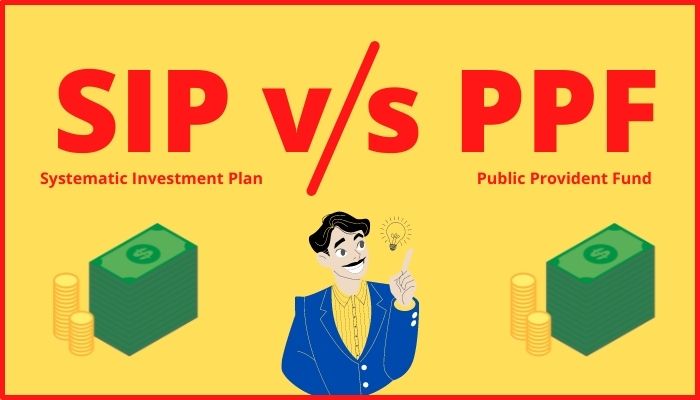Public Provident Funds (PPFs) and Systematic Investment Plans (SIPs) are two different investment options. Even though they fall under separate asset classes, each of them can help investors achieve their long-term financial objectives. Each of these investments carries a different amount of risk and offers varying returns.
About The Public Provident Fund (PPF)
The Public Provident Fund (PPF) account is one of the most popular long-term investment options for individuals with a low-risk tolerance, given that the returns it generates are guaranteed. The minimum investment required to start this account is Rs. 500, and the current PPF interest rate for Q1 FY 2022–23 is 7.1%. The lock-in period for the Public Provident Fund is 15 years. The scheme can be extended further in blocks of 5 years. Additionally, PPF allows investors to take a loan against their PPF investments.
About The Systematic Investment Plan (SIP)
A Systematic Investment Plan also referred to as a SIP, is a method that allows investors to invest in mutual funds. Instead of making a large investment all at once, investors who participate in SIPs make continuous deposits into mutual funds on a quarterly or monthly basis. As a result, SIPs are an easy and flexible investment strategy that not only encourages saving but also allows disciplined investment that produces long-term benefits.
The following are the few differences between PPF and SIP:
- Product Structure
Under the PPF, investors are permitted to contribute a maximum of Rs 1.5 lakh. Investors have the choice of investing annually in a lump sum or in 12 installments over the course of a year. Investors will get their principal amount plus any interest that has accrued once the 15-year PPF period has ended.
Systematic Investment Plans, also known as SIPs, are mutual fund investments that enable investors to make smaller, more frequent investments rather than one large, one-time investment. After making an investment, the investor will regularly receive mutual fund units based on the Net Asset Value (NAV), which is the prevailing price of the fund.
- Returns
The government determines and calculates the PPF returns on an annual basis. The rate of interest for PPF investments may change during the investment period in the event of changes in government policy.
The SIP investments are made in mutual funds, so the returns will depend on how well the particular mutual fund performs. Returns on SIP investments will be determined by market trends.
- Investment Objectives
A PPF is a long-term investment with a minimum term of 15 years or longer. As a result, investors must take into account the objectives they hope to accomplish in 15 to 20 years. It is suitable for objectives like funding a child’s education and planning post-retirement years.
SIP investments are suited for the majority of investors since they can meet both short- and long-term objectives. They are considered a good option for wealth creation.
- Tenure
The minimum term for PPF is 15 years. After it reaches maturity, investors can extend the same in blocks of 5-years.
Under a SIP, investors have the flexibility to invest for any duration. It may be 6 months, 1 year, 5 years, or even longer. You can use the Kuvera SIP Calculator to calculate the wealth gain and expected returns for your monthly SIP investment.
- Level of Risk
The PPF is a government-sponsored scheme, and the investment is unrelated to the market. As a result, it provides guaranteed returns to protect the financial needs of many people. Like fixed deposits, it is one of the greatest investing options for those with a low-risk tolerance. You can use the FD Calculator to determine how much interest you can receive by investing in a fixed deposit.
On the other hand, mutual funds are subject to market risk. The value of equity funds fluctuates frequently due to price changes in the stocks held by the fund. Debt fund values also fluctuate due to variations in bond prices. However, over time, mutual funds promise more growth potential.
- Liquidity
One of the major drawbacks of PPF investments is that they offer relatively low liquidity. Investors will only be permitted to withdraw their money after a few years have passed since the investment’s start date because it is a long-term investment.
One of the primary advantages offered by Systematic Investment Plans is the liquidity that they offer. If investors have invested in a SIP, they have the flexibility to stop their investment at any time and can redeem their shares in as little as one or two business days. Usually, mutual fund houses impose a penalty (called an “exit load”) if investors redeem their investment too early.
Although it is challenging to compare a market-linked product with a fixed-income one, investing in PPF is advised for people who are completely risk averse. Mutual funds are a good option for investors who are willing to take a moderate risk to earn higher returns.

